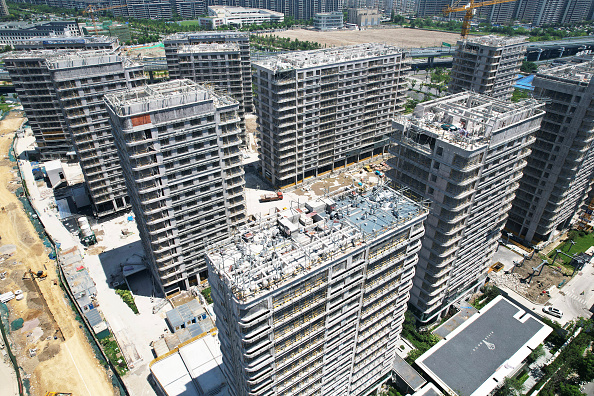The Chinese economy grew at a slower pace in the third quarter of this year, according to official figures released by the Chinese Communist Party on Friday. The growth rate of 4.6% year-on-year is the slowest since early 2023, with the real estate industry being particularly hard hit.
In comparison to the figures previously released by the National Bureau of Statistics of China, GDP growth was 5.3% in the first quarter and 4.7% in the second quarter. The third quarter figures announced on Friday showed a further decline to 4.6%. It is evident that even according to the data released by the Chinese Communist Party, China’s economy has been below the 5% growth target for two consecutive quarters. In the first three quarters of this year, China’s year-on-year economic growth stood at only 4.8%.
The authenticity of the economic data voluntarily disclosed by the Chinese Communist Party has long been questioned by outsiders.
Industrial output in China increased by 5.8% in the first three quarters compared to the same period last year, while retail sales only grew by 3.3%. However, real estate investment decreased by 10.1% compared to the previous year, with new home sales plummeting by 22.7%, indicating that the real estate market is still in a state of deep adjustment.
As 70% of Chinese household wealth is concentrated in real estate, the industry accounted for a quarter of the economy at its peak. The latest figures show that consumer willingness to spend remains low.
Despite multiple rounds of policy support measures taken by the Chinese Communist Party over the past year, the real estate market has shown no signs of recovery. The data from Friday indicates that China’s new home prices fell at the fastest rate since May 2015.
China’s crude steel production in September recorded a fourth consecutive month of decline, failing to meet expectations for a rebound in construction commodity purchases.
Additionally, as the only bright spot in the economy, the key export sector is starting to show cracks, with shipping growth sharply slowing down last month.
Earlier this week, China’s customs data showed a significant slowdown in exports in September, increasing by only 2.4% compared to the same period last year in US dollar terms, lower than the 8.7% year-on-year growth in August. Imports also showed weak performance, growing by only 0.3%, well below expectations, indicating that manufacturers are significantly cutting prices to clear inventory before tariffs are imposed by several trading partners.
China has traditionally relied on infrastructure and manufacturing investment, consumption, and exports to drive economic growth, but with investment cooling off, consumption weakening, and now even exports declining.
Bruce Pang, Chief Economist at JLL, told Reuters, “China’s data for the third quarter of 2024 is not optimistic. Given soft domestic demand, the struggling real estate market, and the slowing export growth, this performance is in line with market expectations.”
A Reuters survey previously indicated that economists expected China’s economy to grow by 4.5% year-on-year in the third quarter.
The survey also showed that economists expected China’s economy to grow by 4.8% in 2024, below Beijing’s target, with growth potentially further declining to 4.5% in 2025.
Since early last year, China has been grappling with deflationary pressures, with recent data suggesting that these pressures are increasing as export prospects, the only bright spot in the economy this year, appear dim under foreign trade restrictions imposed by major trading partners.
The worrying weakening in export momentum further increases pressure on Beijing to stimulate demand.
Toru Nishihama, Chief Economist at Dai-Ichi Life Research Institute, stated, “GDP data confirms China is facing overcapacity and inadequate demand. China is considered to be in full deflation.”
The Chinese Communist Party has recently introduced a series of measures aimed at stimulating the economy, including lowering mortgage rates for existing homes and allowing banks to increase loans by reducing reserve requirements.
However, industry insiders believe that most of these measures are scattered. Observers of China have repeatedly emphasized that authorities need to address long-term structural challenges such as overcapacity, high debt levels, and aging population.
Nishihama remarked, “China (CPC) has started to introduce stimulus measures since last month. I am not sure if these measures are sufficient. What I can say is that the Chinese (CPC) authorities have failed to focus on the key issues – they have not taken the necessary measures while overlooking structural problems.”
(References from Reuters and AP were used in this article)

